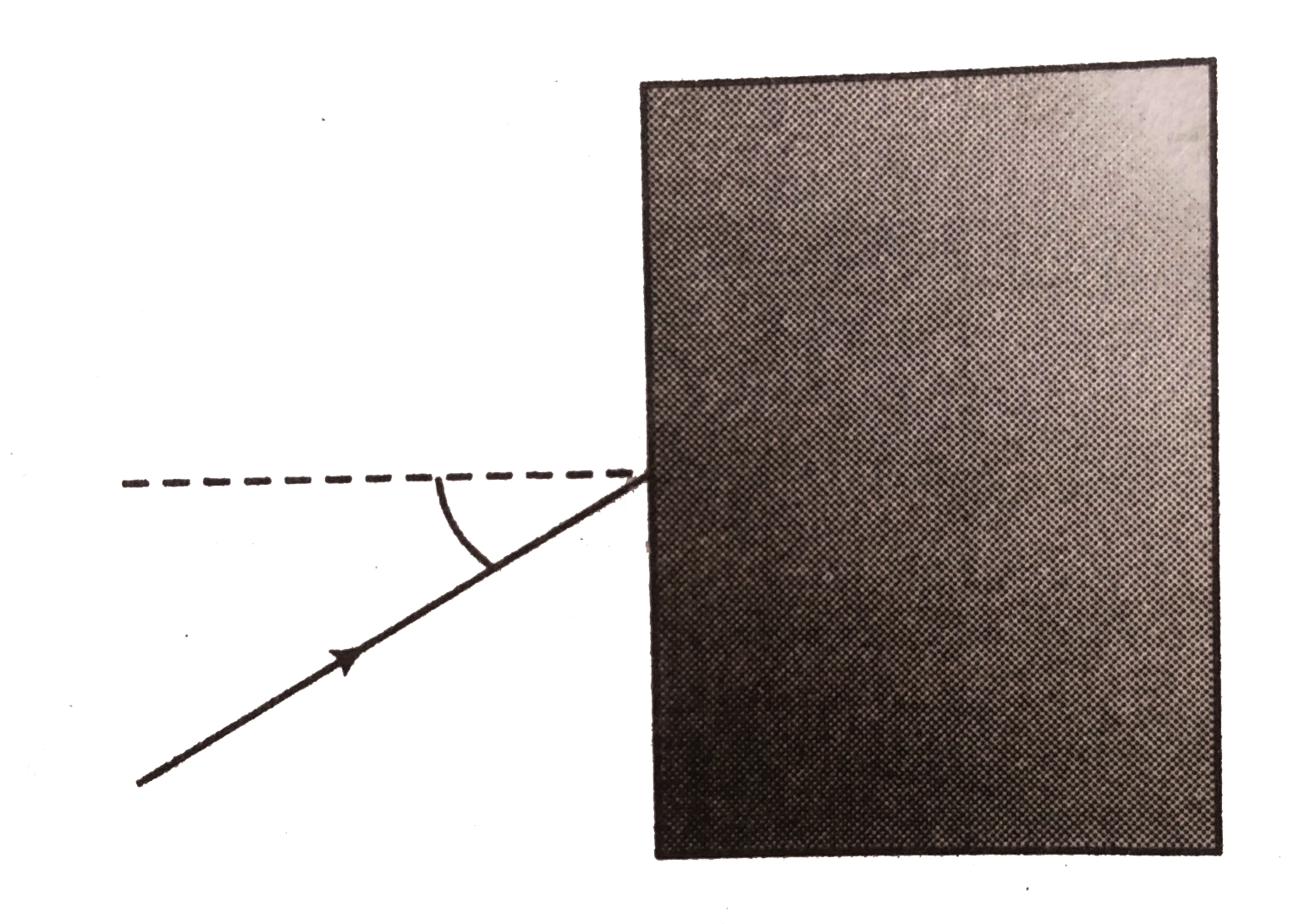The intensity of a sound wave gets reduced by 20% on passing through a slab. The reduction intensity on passage through two such consecutive slabs
40%
36%
30%
50%
The correct Answer is:B
To solve the problem of how the intensity of a sound wave is reduced when passing through two consecutive slabs, we can follow these steps:
1. Define Initial Intensity:
Let the initial intensity of the sound wave be I0.
2. Calculate Intensity After First Slab:
The intensity of the sound wave is reduced by 20% after passing through the first slab. Therefore, the intensity after the first slab, I1, can be calculated as:
I1=I0−0.2I0=0.8I0
3. Calculate Intensity After Second Slab:
The intensity after passing through the second slab is again reduced by 20%. Thus, the intensity after the second slab, I2, can be calculated as:
I2=I1−0.2I1=0.8I1
Substituting I1:
I2=0.8(0.8I0)=0.64I0
4. Calculate the Reduction in Intensity:
Now, we need to find the total reduction in intensity from the initial intensity I0 to the final intensity I2:
Reduction=I0−I2=I0−0.64I0=0.36I0
5. Calculate Percentage Reduction:
To find the percentage reduction in intensity, we use the formula:
Percentage Reduction=(ReductionI0)×100%
Substituting the reduction we found:
Percentage Reduction=(0.36I0I0)×100%=36%
Final Answer:
The intensity of the sound wave is reduced by 36% after passing through two consecutive slabs.
---
Let the initial intensity of the sound wave be I0.
The intensity of the sound wave is reduced by 20% after passing through the first slab. Therefore, the intensity after the first slab, I1, can be calculated as:
I1=I0−0.2I0=0.8I0
The intensity after passing through the second slab is again reduced by 20%. Thus, the intensity after the second slab, I2, can be calculated as:
I2=I1−0.2I1=0.8I1
Substituting I1:
I2=0.8(0.8I0)=0.64I0
Now, we need to find the total reduction in intensity from the initial intensity I0 to the final intensity I2:
Reduction=I0−I2=I0−0.64I0=0.36I0
To find the percentage reduction in intensity, we use the formula:
Percentage Reduction=(ReductionI0)×100%
Substituting the reduction we found:
Percentage Reduction=(0.36I0I0)×100%=36%
The intensity of the sound wave is reduced by 36% after passing through two consecutive slabs.
Topper's Solved these Questions
- SOUND WAVES AND DOPPLER EFFECTBOOK - CENGAGE PHYSICS ENGLISHCHAPTER - SOUND WAVES AND DOPPLER EFFECTEXERCISE - Multiple Correct
44 Videos
- SOUND WAVES AND DOPPLER EFFECTBOOK - CENGAGE PHYSICS ENGLISHCHAPTER - SOUND WAVES AND DOPPLER EFFECTEXERCISE - Assertion-Reasoning
24 Videos
- SOUND WAVES AND DOPPLER EFFECTBOOK - CENGAGE PHYSICS ENGLISHCHAPTER - SOUND WAVES AND DOPPLER EFFECTEXERCISE - Subjective
56 Videos
- RIGID BODY DYNAMICS 2BOOK - CENGAGE PHYSICS ENGLISHCHAPTER - RIGID BODY DYNAMICS 2EXERCISE - Interger
2 Videos
- SUPERPOSITION AND STANDING WAVESBOOK - CENGAGE PHYSICS ENGLISHCHAPTER - SUPERPOSITION AND STANDING WAVESEXERCISE - Comprehension Type
5 Videos
Similar Questions
The intensity of γ - radiation from a given source is I. On passing through 36 mm of lead, it is reduced to I/8. Assuming that the intensity in trasmitted radiation varies expontially with the thickness of the material, then the thickness of lead, which will reduce the intensity to I/2 will be
View SolutionThe two coherent sources of equal intensity produce maximum intensity of 100 units at a point. If the intensity of one of the sources is reduced by 50% by reducing its width then the intensity of light at the same point will be
View Solution
Knowledge Check
The intensity of sound wave while passing through an elastic medium falls down by 10% as it covers one metre distance through the medium. If the initial intensity of the sound wave was 100 decibels, its value after it has passes through 3 metre thickness of the medium will be
A70 decibelB72.9 decibelC81 decibelD60 decibelA sound wave is passing through air column in the form of compression and rerefactions. In consecutive compressions and rerefactions.
Adensity remains constantBBoyles law is obeyedCbulk modulus of air oscillatesDthere is no transfer of heat.
The two coherent sources of equal intensity produce maximum intensity of 100 units at a point. If the intensity of one of the sources is reduced by 50% by reducing its width then the intensity of light at the same point will be
View SolutionAn unpolarized light with intensity 2I0 is passed through a polaroid. The resultant intensity of the transmitted light will be
View SolutionA sound wave is passing through air column in the form of compression and rerefactions. In consecutive compressions and rerefactions.
View SolutionThe intensity of gamma radiation from a given source is I
On passing through 36mm of lead , it is reduced to 18 . The thickness of lead which will reduce the intensity to 12 will be
View SolutionUnpolarized light with intensity I0 is incident on combination of two polarizers as shown . The intensity of the light after passage through both the polaroids will be.

View SolutionA ray of light is incident on the left vertical face of the glass slab. If the incident light has an intensity I and on each reflection the intensity decreases by 90% and on each refraction the intensity decreases by 10%, find the ratio of the intensities of maximum to minimum in reflected pattern.

View Solution
